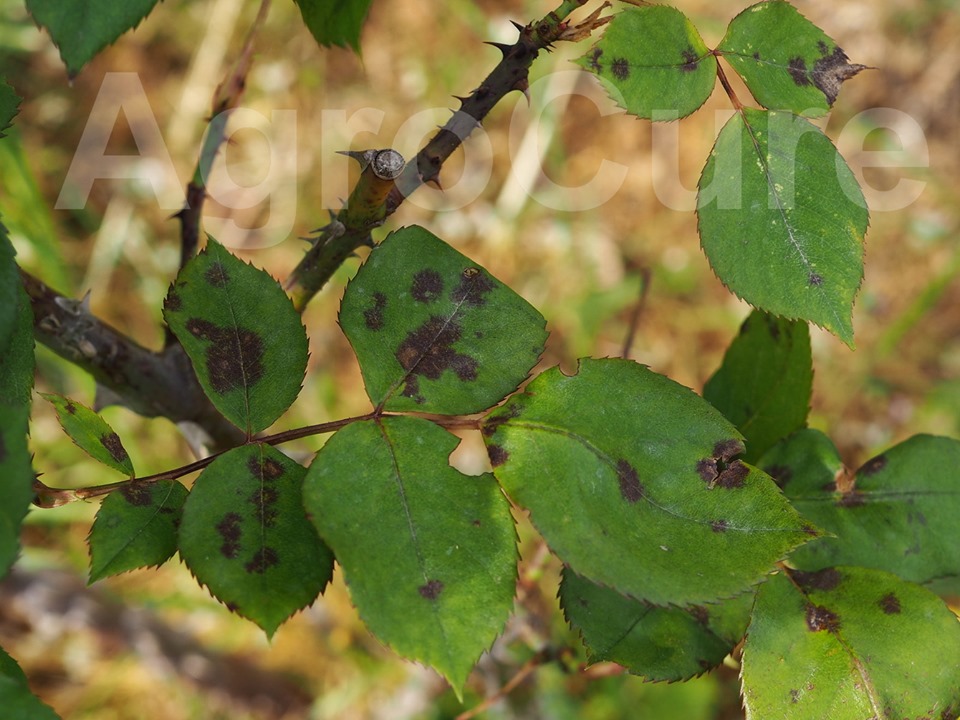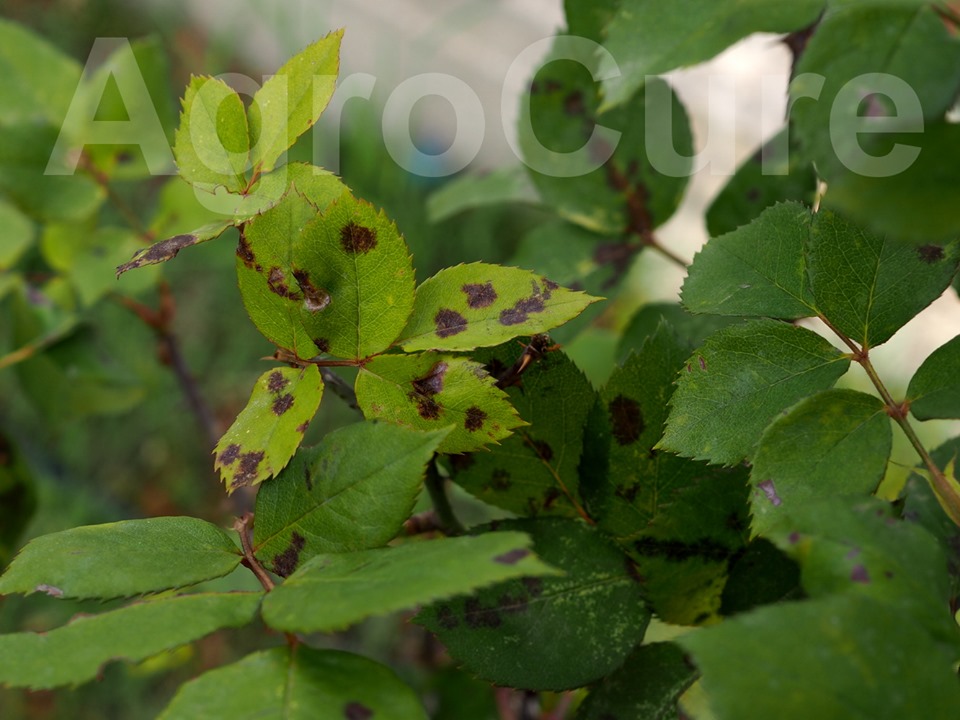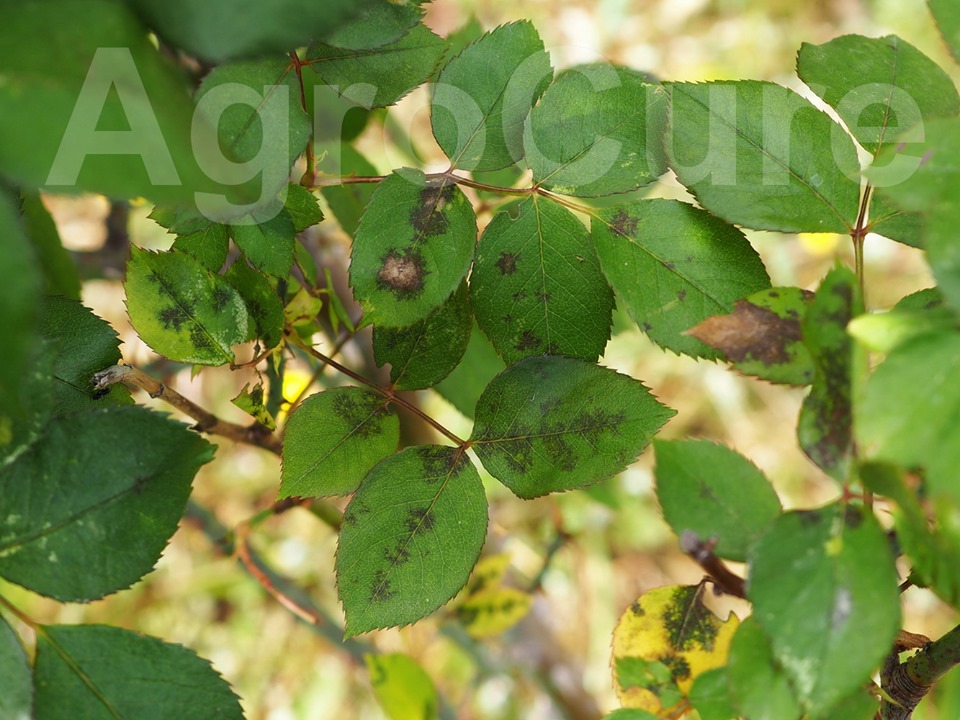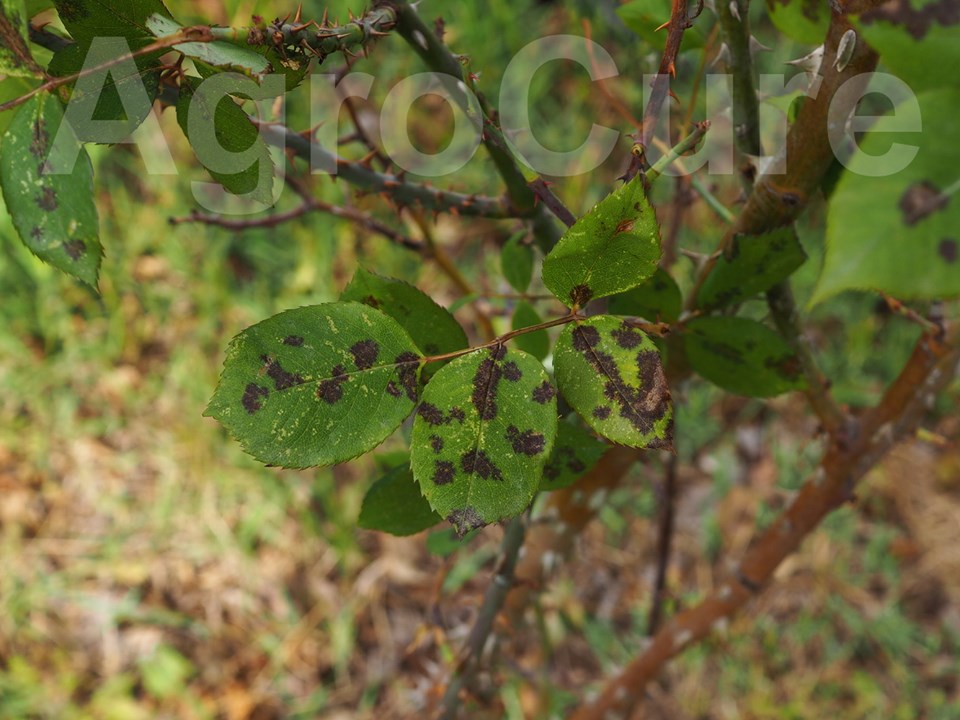Rose black spot disease

The cause of this well known and widespread disease of the roses is the fungus Diplocarpon rosae (Marssonina rosae). It is the most common and serious disease of rose. The fungus infects the leaves in the spring as it is favored by the spring dew, rain and moisture on the leaf surface. By contrast the high temperatures of June, July and August stop the growth of the fungus. Small brown-black rounded spots appear on the top surface of the leaves which expand gradually.
Affected leaves may turn yellow and fall eventually, a phenomenon which starts from the old leaves of the plant base. In some cases, the spots remain small and the leaves do not fall. Another symptom may be the appearance of small purple-black spots on tender shoots. Severely affected plants may lose most of their foliage and remain stunted and vulnerable to other adverse conditions.
Common control measures:
- Remove and destroy infected leaves and shoots. Also, remove all infected fallen foliage
- Keep foliage dry therefore do not water with sprinkler
- Use of fungicides: chlorothalonil, copper fungicides, difenoconazole, mancozeb, penconazole, potassium phosphonate, prochloraz, sulphur, thiophanate methyl, ziram.




